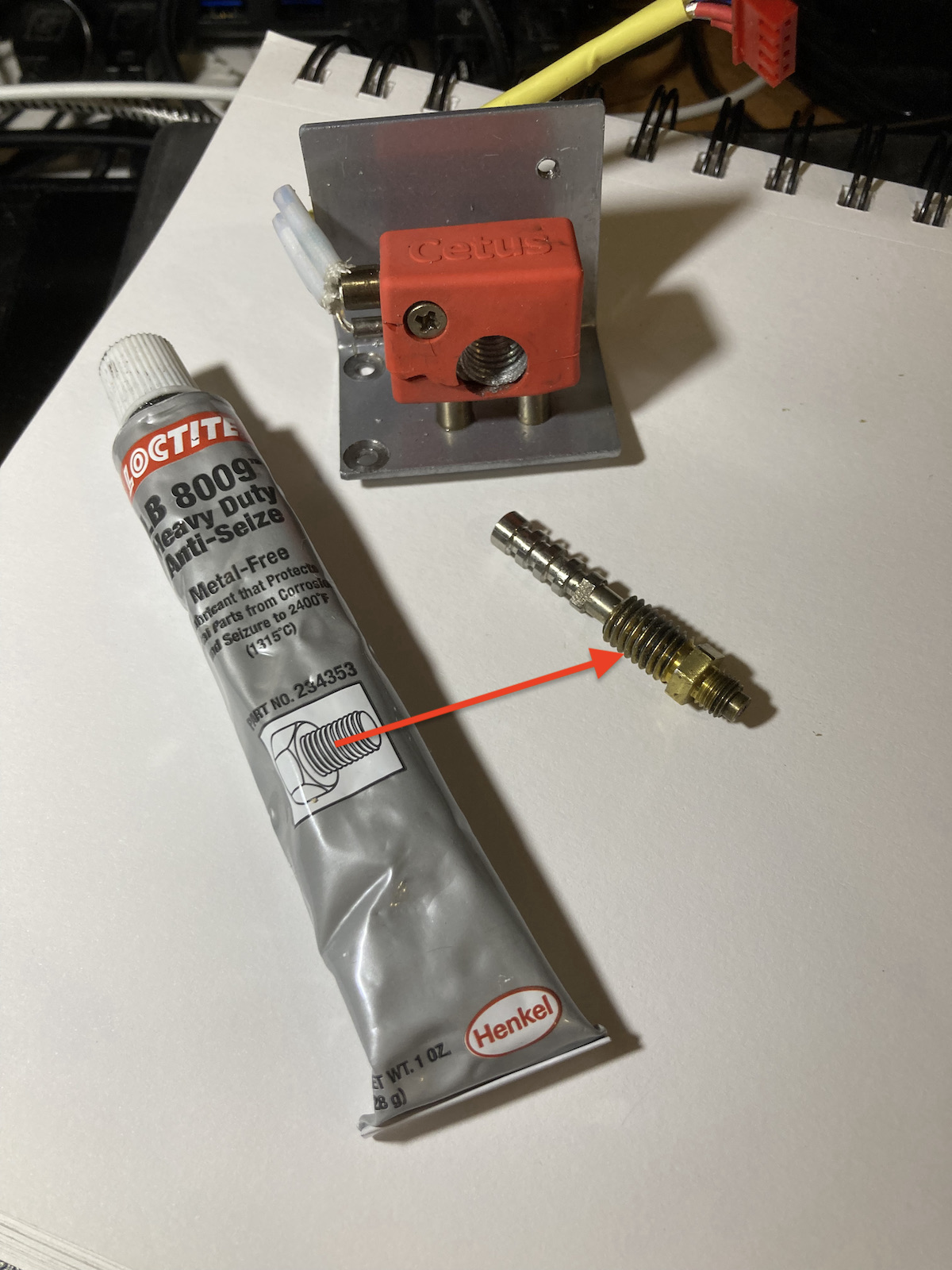 I have discovered what I think many 3D print people call a “plugged nozzle” may not be that problem at all. At least not plugged by debris.
I have discovered what I think many 3D print people call a “plugged nozzle” may not be that problem at all. At least not plugged by debris.
The heat transfer within an FDM extruder is critical to good performance. The faster the feed (more filament volume) the more critical the heat flow within the extruder becomes.
The problem is any air gap in the flow path from the heating element to the extruder nozzle. Conductive heat cannot jump gaps such as screw threads. It converts to radiated heat to span the gap then back to conductive. The gap does not have to be large, The effect is like a huge resistor in electrical flow. Perhaps more like a spark gap.
If one has ever assembled a heat sink onto a CPU or any other critical heat transfer requirement, you know a “thermal paste” is required to ensure an absolute intimate connection and flow path for conductive heat.
Yet, this is never factory applied in our critical heat flow extruder connections. Probably because off the high temperatures of 250C and higher
I have been applying high heat anti-seize compound to the threaded barrel, between the heating element, thermal mass block, and the threaded feed barrel. I have not applied any to the nozzle threads for fear of introducing foreign material into the nozzle.
Electronic CPU heat sink compound is only good to 200C., Not suitable for this use. I bought Locktite LB8009 anti-seize. Used on automotive exhaust threaded components. Not really a thermal paste but permits extremely tight no-gap screw-in assembly without seizing. Use sparingly as there is some volatile off-gassing (smoke/odor) of the low-temp base carrier material on first heat. Good to 1350C so the high-temp material is not affected by extruder heat.
The improvement to extruder performance with tight threading has cured 99% of the flow issues with my extruders. Nozzles now never “plug-up”. They actually wear down the tips after many months of continuous fault-free performance. It works for me.
For many operators (people), poor nozzle flow appears to be a plugged nozzle. So the nozzle is changed. In changing the nozzle the threaded connections are disturbed and everything “tightened up” a bit solving the heat transfer problem (for a while). Thus, it appears it was a plugged nozzle issue.
Some folks raise print temperatures trying to improve flow. Sometimes to the point when the filament breaks down, gasses (cooks) off (thought to be proof of water) and actually burns on the nozzle, Result is an actual debris plug.
Improve the thermal conductive path of the extruder. Every assembled component needs to have high temperature compound to eliminate every possible air gap, no matter how small.
I greatly improved the performance of my extruders. Conductive thread compound should be an industry standard with 3D print extruders the same as heat sinks on CPU’s.
Search “High Temperature Heat Transfer Compound” for other brands. There may be something other than the high temp anti-seize I use, Must be suitable for temperatures 300C and above.
